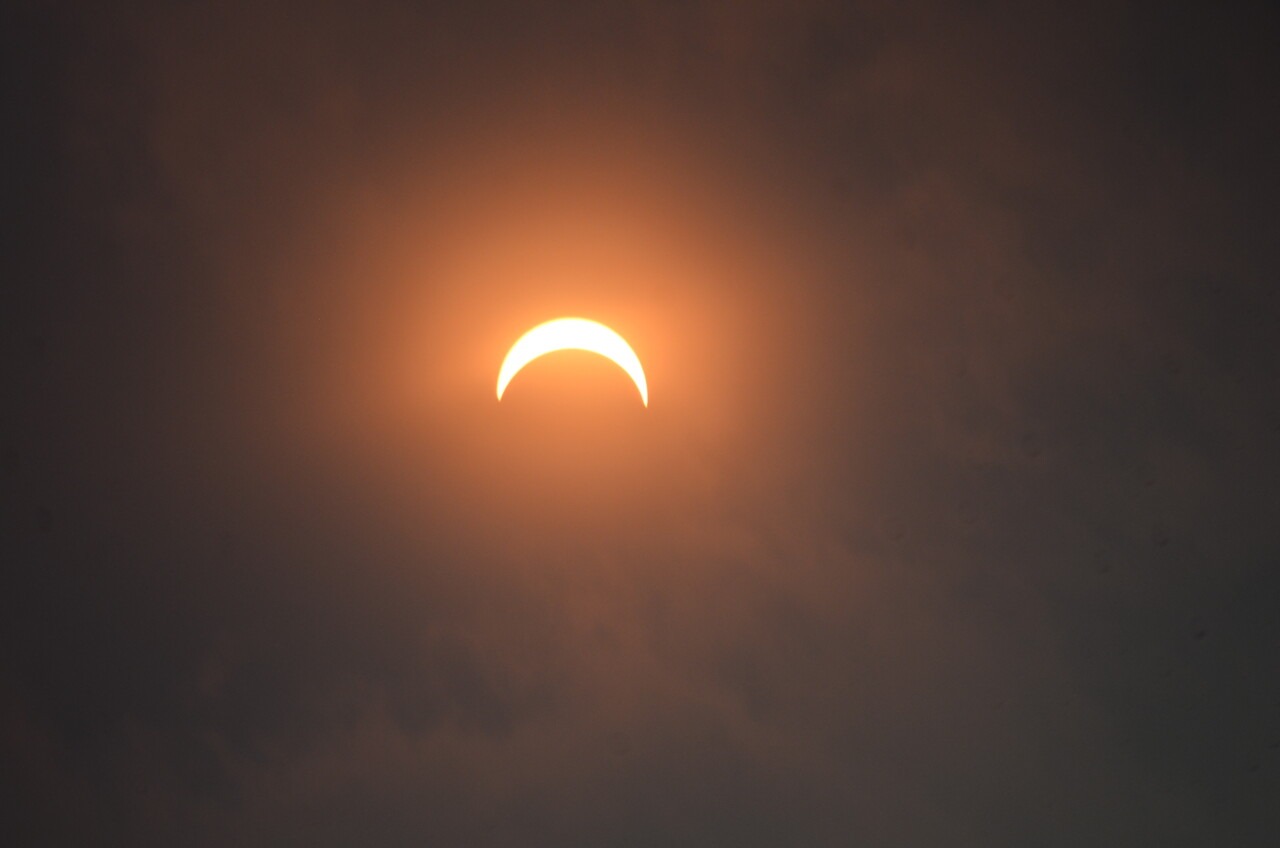By Martin Leduc
Published on
If the event is not the rarest, it is always interesting to observe a solar eclipse, even partial.
This is what awaits part of the Earth, this Tuesday, October 25, 2022, when the Moon will pass partly in front of our star. She’ll cover a little bit of it. But, depending on the city in which you are, the show may be different.
What time to observe it from home?
It’s basically in the northeast sky of France that the eclipse will be “visible”. The Institute of Celestial Mechanics and Ephemeris Calculation (IMCCE) gives more details.
To Strasbourg, for example, the peak of the eclipse is expected at 12:09 p.m. The Moon will then cover 19.5% of the visible surface of the Sun. To Bordeauxon the other hand, only 5.1% coverage is expected with a peak reached at 12:01 p.m.
This geographical specificity is due to the fact that the Earth revolves around the sun, when the Moon revolves around the Earth, which means that at the same time, the sun is not the same in Brest and Strasbourg. Take for example this Sunday, October 23, 2022.
In Brest, the sun did not rise until 8:47 a.m., whereas in Nice it had already been up for 7:55 a.m. In the same logic, it set at 7:13 p.m. in Quimper and 6:35 p.m. in Nice. Quite a difference though.
How to observe it without risk?
Observing an eclipse without protection can be very dangerous for eyes. It can even make you blind, in the worst case, as reminded Public Health France.
Thus, it is advisable, as for each event of this type, to be equipped with “special eclipse” glasses, which filter UV rays, notably. Be careful, classic sunglasses are by no means sufficient.
Note that if you plan to observe the eclipse through a telescope, wearing glasses, even filtering ones, is not enough. You must equip your lens with a filter at the front of the optics.
If we don’t look at the sun, will we see a difference?
Unfortunately no. “The light of day will not really be modified”, directly tempers Gilles Dawidowicz, vice-president of the Astronomical Society of France (SAF) and chairman of the planetology commission, contacted by news.fr.
To enjoy the show, it will therefore be better to equip.
Why won’t it be all black?
Yes, who says eclipse normally says full black. But not this time.
We are dealing with a partial eclipse, which means the sun will not be completely obstructed.
Like most eclipses that can be witnessed, it will be a so-called eclipse partial. Otherwise, we could have spoken of a annular eclipse : the Moon is well aligned with the sun, but not close enough to us to completely cover it. Therefore, we see a big black circle (our natural satellite) in the middle of the sun.
We could also have spoken of a total eclipse if the sun was perfectly aligned with the moon. The latter then hides it completely, leaving only the solar corona visible – this little white halo behind the black circle.
Here’s what the sun should look like during obscuration peaks:
Was this article helpful to you? Know that you can follow Actu in space My News . In one click, after registration, you will find all the news of your favorite cities and brands.
We would like to give thanks to the writer of this article for this remarkable content
MAP. Eclipse of October 25: what time to observe it in your department?
You can view our social media profiles here , as well as additional related pages here.https://nimblespirit.com/related-pages/

